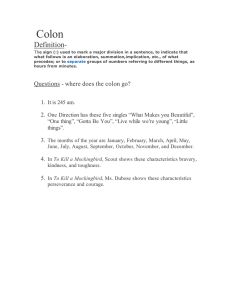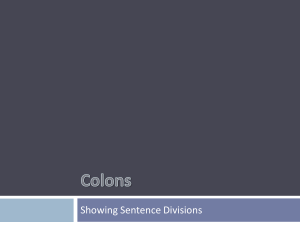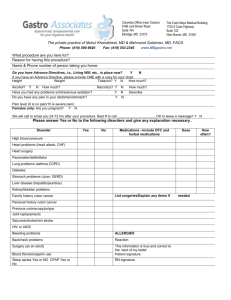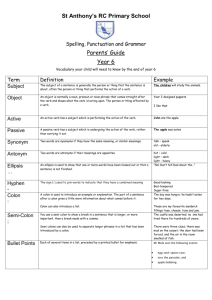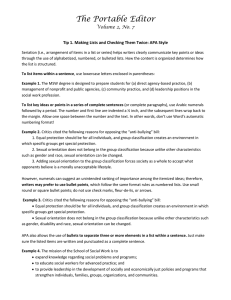Writing Tip of the Week Correct Use of the Colon
advertisement
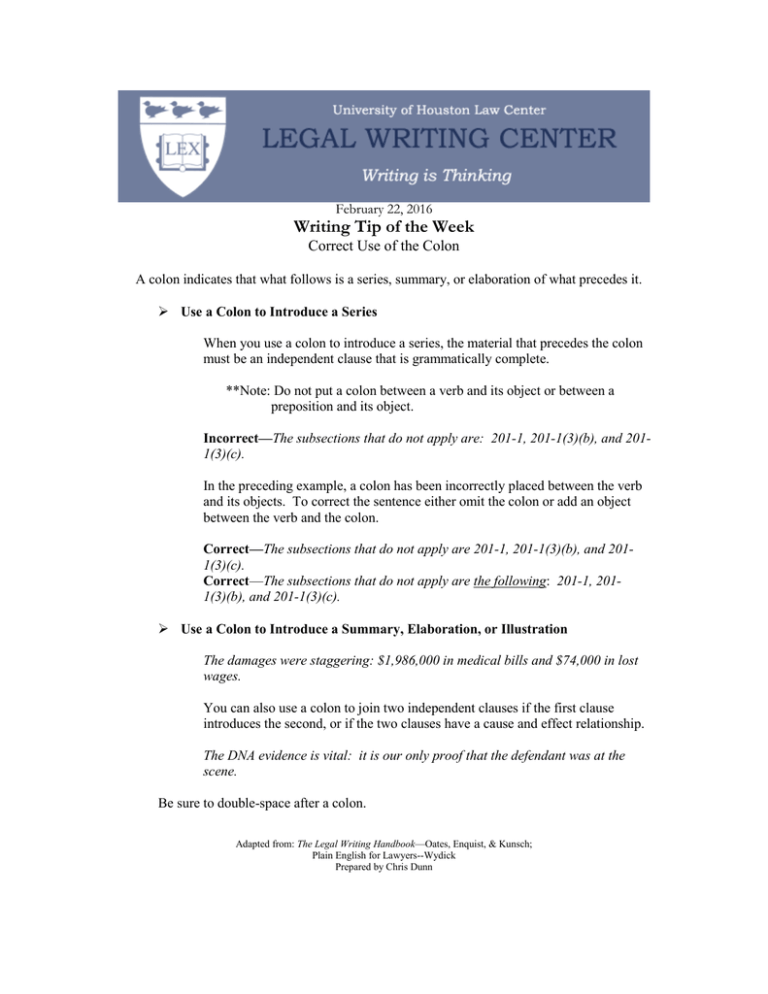
February 22, 2016 Writing Tip of the Week Correct Use of the Colon A colon indicates that what follows is a series, summary, or elaboration of what precedes it. Use a Colon to Introduce a Series When you use a colon to introduce a series, the material that precedes the colon must be an independent clause that is grammatically complete. **Note: Do not put a colon between a verb and its object or between a preposition and its object. Incorrect—The subsections that do not apply are: 201-1, 201-1(3)(b), and 2011(3)(c). In the preceding example, a colon has been incorrectly placed between the verb and its objects. To correct the sentence either omit the colon or add an object between the verb and the colon. Correct—The subsections that do not apply are 201-1, 201-1(3)(b), and 2011(3)(c). Correct—The subsections that do not apply are the following: 201-1, 2011(3)(b), and 201-1(3)(c). Use a Colon to Introduce a Summary, Elaboration, or Illustration The damages were staggering: $1,986,000 in medical bills and $74,000 in lost wages. You can also use a colon to join two independent clauses if the first clause introduces the second, or if the two clauses have a cause and effect relationship. The DNA evidence is vital: it is our only proof that the defendant was at the scene. Be sure to double-space after a colon. Adapted from: The Legal Writing Handbook—Oates, Enquist, & Kunsch; Plain English for Lawyers--Wydick Prepared by Chris Dunn


